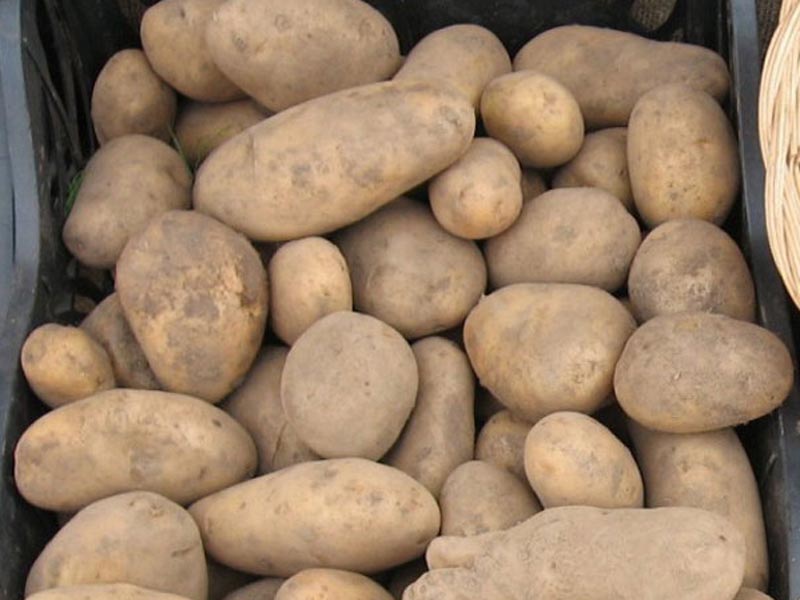Patatis Cojonariis - Potatoes
The tubers of patatis cojonariis are small, they are produced in several locations of Friuli, in the plain, in the morainic hills, and in the mountains. Without a doubt, the production involves the provinces of Udine, Gorizia, and Pordenone.
Brief description of the product: The tubers have a tapered shape (kidney-shaped), sometimes slightly curved, a thin and usually straw yellow skin, superficial "eyes", and a yellow pulp. The plants are small, with straight stalks in their first development stages, and then more or less ascending. Usually, the plants do not emit flowers; sometimes it is possible to see a few violet flowers. The tubers are used for the cooking, usually whole (or cut in half), without peeling them (since the skin is thin); they hold up cooking and have a slight hazelnut taste. In cuisine, the biggest tubers are mainly used for meat gravy in the pan (stewed with beef) or with roasts in the oven; the tubers, especially the smallest ones, are also cooked in the pan with butter or oil, but they can also be fried. They can also be boiled and then put in the oven to gild.
Description of the processing, conservation, and maturation methods: Patitis cojonariis are mainly cultivated in small or very small family vegetable gardens. They grow in fresh soils with a subacid PH and do not suffer summer drought. The traditional cultivation techniques include the following activities carried out with manual tools: organic and/or mineral manuring, preparation of the sowing soil, planting, earthing up, hoeing against infesting plants, cover manuring, eventual emergency irrigation, eventual parasiticide treatments, harvesting. The tubers are planted in ridges with 50-60cm of distance between the rows and 15-20cm along the row. Sowing is held from March in the plain (traditionally on St. Joseph Day, on 19th March), at the end of April/early May in the mountains (up to 1,000m). Harvesting goes from the first half of July in the plain to mid-August in the mountains. The tubers are harvested when the epigeal part of the plants and the soil are dry. For the sowing, the tubers produced in the agricultural holding the year before are used.
Features demonstrating the use of homogeneous methods according to the traditional rules for a period not inferior to 25 years: The cultivation of patatis cojonariis in many locations of the region dates back to very ancient times. The elderly perfectly remember this particular potato variety (already widespread for family consumption between the two wars) for its unusual organoleptic features and mainly associate it with stewed meat. The few producers-farmers still cultivating this local variety, scarcely productive as far as quantities are concerned, want to continue with this traditional cultivation for the unusual quality features of the tubers and for the demand of a great number of fans. Immediately after 1980, within the initiatives coordinated by the Province of Udine for the development of the mountain territories (for instance, promoting the cultivation of small fruits and vegetables), this variety was successfully cultivated in the plain of Cavazzo Carnico and in the family vegetable gardens in Forni di Sopra. The origins of this potato variety are not certain. It shares some features with the potato variety of Piedmont called with various names, like patata del bur, patata del bec (because it is tapered and curved), trifulot del bür or ratin.







